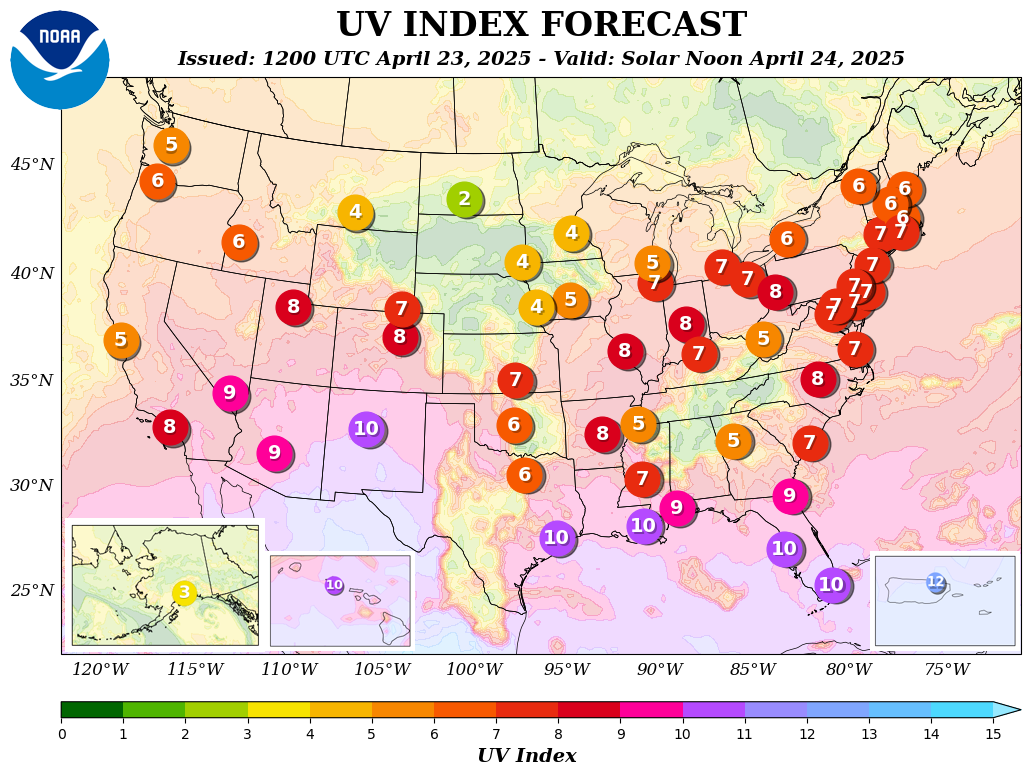

Calculate Sun Protection And Sun Tanning Time. (Avoid sunburn by knowing your skin type, UV index and SP factor.)
Use tanning calculator to calculate maximum sun tanning time based on skin type, UV index (UVI), and sun protection factor (SPF)
The calculated value is an approximation only. Take care of yourself and avoid sunburn. Use protection: sunscreen, clothes, hat, sunglasses and shade. UV rays also cause sunburn when its cloudy be careful.
Natural Tanning Vs Tanning Beds
americasfrontlinedoctorsummit.com
medicineuncensored.com
Skin type
Type I: very light skin, light blonde or red hair, freckles
Type II: light skin, blonde or light brown hair, sometimes freckles
Type III: medium skin, dark blonde or brown hair
Type IV: mediterranean, brown or black hair
Type V: dark skin, black hair
Type VI: dark brown to black skin, black hair
Choosing a skin type sets your self-protection time, you can also enter this manually.
Self-protection time
The maximum amount of time, that the unprotected skin should be exposed to sunlight. An already present tan increases the self-protection time. This doesn't apply to pre-tanning with a sun tanning bed, because those commonly have a different distribution of the UV-radiation (less UV-B) as the sunlight. (Advice: Don't use of sun tanning beds for cosmetic reasons.)
Natural Tanning Vs Tanning Beds
AnyCalculator.com (Over 100 online realtime calculators)
ExactWeather.com (Not exact but close enough)
ArkMailBoxes.com (Scale Model Calculator)
StreamZones.com (Roku Channels Public And Private)
CellularClean.com (FREE Roku Channel About Cellular Detoxification And Weight Loss)
(UV Exposure Levels At Solar Noon Hour)
Low 2-5 | Moderate 3-5 | High 6-7 | Very High 8-10 | Extreme 11
(Minutes To Skin Damage)
60 Min | 45 Min | 30 Min | 15 Min | (Less Than 10 Min)

PAULA DEEN COOKING NEWS AND RECIPES MilitaryChronicle.com (Over 200 military videos on demand.)
Natural Tanning Vs Tanning Beds
Sunscreens are products combining several ingredients that help prevent the sun's ultraviolet (UV) radiation from reaching the skin. Two types of ultraviolet radiation,UVA and UVB, damage the skin, age it prematurely, and increase your risk of skin cancer.
UVB is the chief culprit behind sunburn, while UVA rays, which penetrate the skin more deeply, are associated with wrinkling, leathering, sagging, and other light-induced effects of aging. They also exacerbate the carcinogenic effects of UVB rays, and increasingly are being seen as a cause of skin cancer on their own. Sunscreens vary in their ability to protect against UVA and UVB.
Most sunscreens with an SPF of 15 or higher do an excellent job of protecting against UVB. SPF — or Sun Protection Factor — is a measure of a sunscreen's ability to prevent UVB from damaging the skin. Here's how it works: If it takes 20 minutes for your unprotected skin to start turning red, using an SPF 15 sunscreen theoretically prevents reddening 15 times longer — about five hours.
Another way to look at it is in terms of percentages: SPF 15 filters out approximately 93 percent of all incoming UVB rays. SPF 30 keeps out 97 percent and SPF 50 keeps out 98 percent. They may seem like negligible differences, but if you are light-sensitive, or have a history of skin cancer, those extra percentages will make a difference. And as you can see, no sunscreen can block all UV rays.
But there are problems with the SPF model: First, no sunscreen, regardless of strength, should be expected to stay effective longer than two hours without reapplication. Second, "reddening" of the skin is a reaction to UVB rays alone and tells you little about what UVA damage you may be getting. Plenty of damage can be done without the red flag of sunburn being raised.
The answer depends on how much sun exposure you're anticipating. In all cases we recommend a broad-spectrum sunscreen offering protection against both UVA and UVB rays.
To ensure that you get the full SPF of a sunscreen, you need to apply 1 oz – about a shot glass full. Studies show that most people apply only half to a quarter of that amount, which means the actual SPF they have on their body is lower than advertised. During a long day at the beach, one person should use around one half to one quarter of an 8 oz. bottle. Sunscreens should be applied 30 minutes before sun exposure to allow the ingredients to fully bind to the skin. Reapplication of sunscreen is just as important as putting it on in the first place, so reapply the same amount every two hours. Sunscreens should also be reapplied immediately after swimming, toweling off, or sweating a great deal.
If it's cold or cloudy outside, you don't need sunscreen.
This is not true. Up to 40 percent of the sun's ultraviolet radiation reaches the earth on a completely cloudy day. This misperception often leads to the most serious sunburns, because people spend all day outdoors with no protection from the sun.
americasfrontlinedoctorsummit.com
medicineuncensored.com
Back to AnyCalculator.com ExactWeather.com Gen1.org StreamZones.com
FineTunedUniverse.com (Denying The Evolution Lie)